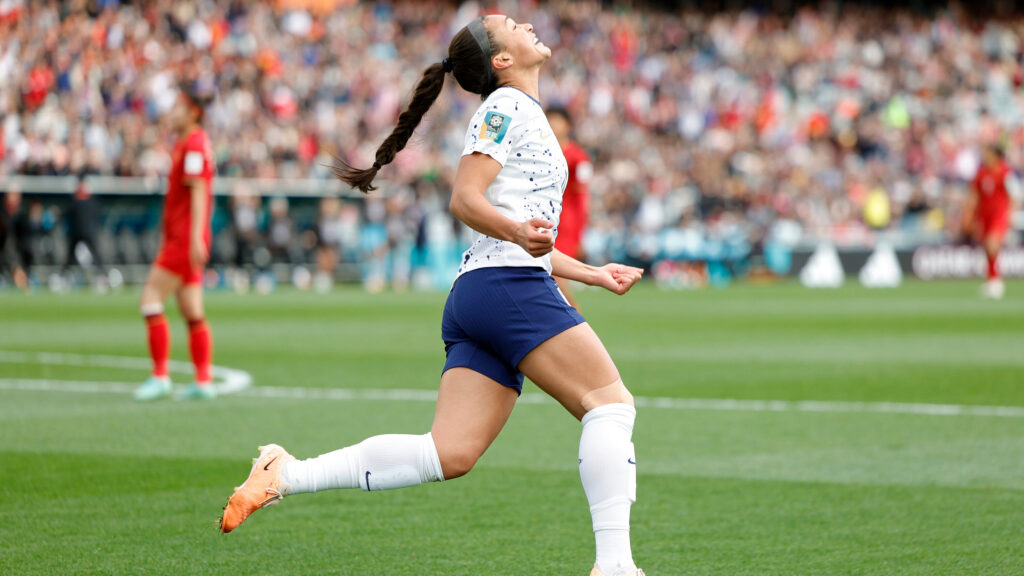Why women’s sport is top of the table for search
March 26, 2024
Looking at data from 2023, out of 55 sporting properties, it’s women’s sport which is dominating what the public are looking for online. David Granger finds out why.
We’re keen to measure everything in sport from prize money to pole position time. But measurement of a sport’s popularity, and its potential for investment, is a more complex proposition.
Which is why Redtorch’s SportOnSearch is such an ingenious way of comparing the brand health of different, disparate sporting entities.
Tracking how many people are actively searching online for a sport means the myriad influences on their decision come into play.
Redtorch, a research, content and creative agency based in London and Lausanne, defines brand as “the sum of everything associated with a product – other than the product itself.” For SportOnSearch, they track every sports property, via Google Trends, web search and YouTube search from 2023 – and compares each with the previous four-year average.
Their top findings? The six sports with the biggest increase in search during 2023 were:
- Barclay’s Women’s Super League + 258%
- Major League Soccer +87%
- Diamond League +85%
- EuroLeague Women +76%
- UEFA Women’s Champion League +70%
- Women’s Six Nations Champion
Of the 55 properties included in the 2023 findings three were football, while four were women’s sport (Including three women’s soccer).
But were there any surprises further down the list? Jess Reus, Redtorch’s Head of Communications & Women’s Sport Lead said: “The WWE (World Wrestling Entertainment) made a significant leap in search increase (+21%), which suggests a growing global interest in wrestling entertainment.
“Plus, changes in motorsports: Formula 1’s drop in search interest (-11%) came as a surprise given its global fanbase and the significant investments in marketing and digital engagement the sport has been making.”
Women’s soccer has benefited from several factors: major tournaments meant an increase in visibility thanks to media coverage and financial investments. The result is an inspiration for the next generation of girls playing and a break down in the existing bias.
As Jess said: “The future is looking bright for women’s sport, which means potential for increased investment, sponsorship and media coverage.
“The great thing about women’s sport being recognised and being invested is: potential for increased participation, and potential for increased sport programmes. From a wider viewpoint, seeing this increased interest in women’s sport reflects more societal shifts in gender equality and diversity.”
As well as football, women’s rugby, basketball tennis and golf all saw marked increases in interest – and the trend shows no sign of lessening. The ongoing momentum suggests a strong trajectory towards further prominence of women’s sport.
Following closely behind the rise in interest in women’s sport is football. And not just in Europe. There was a marked increase in Major League Soccer in the US (+87%) no doubt thanks in part to players such as Messi crossing the Atlantic to join Inter Miami.
But how will the increased interest affect those connected to women’s sport?
For rightsholders, increased viewership, ticket sales, and merchandise revenue could lead to greater opportunities for broadcasting and sponsorship deals. And attract additional investment in infrastructure, facilities, and marketing initiatives, enhancing the quality and appeal of women’s sports events.
For sponsors, their brand image could be enhanced and reach a more diverse audience capitalising on forming partnerships with athletes, teams, and leagues. By investing in women’s sports, sponsors not only demonstrate their commitment to gender equality but also gain access to a loyal and engaged fan base.
Jess said: “Increased interest in women’s sports can lead to greater recognition, endorsement opportunities, and financial rewards for athletes. This could be seen through improvements in pay, prize money, and sponsorship deals and event investment into grassroots participation or talent programmes.”
You can download the full Redtorch SportOnSearch report here.
David Granger has worked in sports marketing for 20 years. He’s an advisory board member for Medialake.AI and a director at Arc & Foundry Creative.



